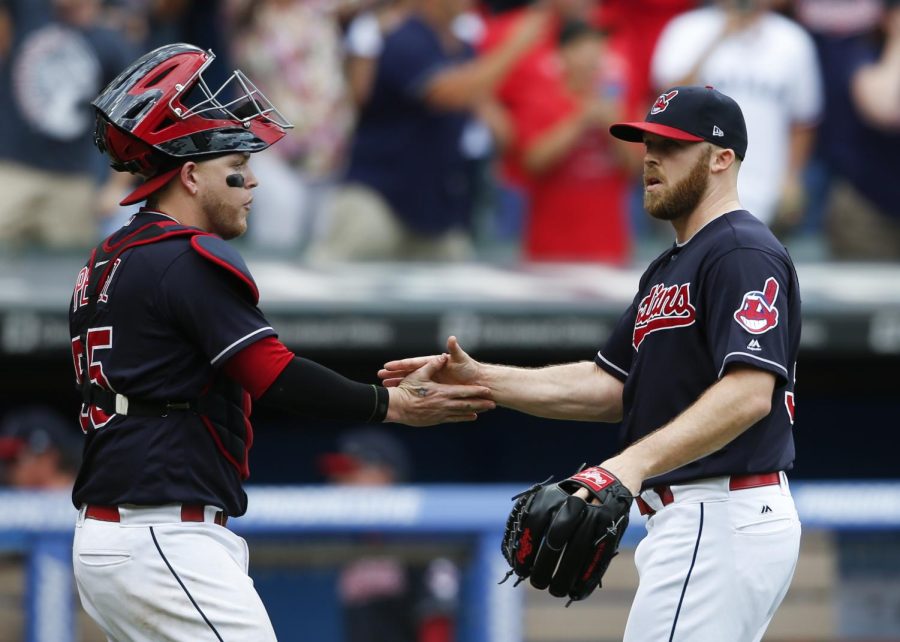Kent State students have mixed reactions about Chief Wahoo removal
Cleveland Indians’ Roberto Perez, left, and Cody Allen celebrate a 5-3 victory over the Detroit Tigers Wednesday, Sept. 13, 2017, in Cleveland. The Indians set the American League record with 21 consecutive wins.
January 30, 2018
The Cleveland Indians announced Monday, Jan. 29 they will remove the controversial Chief Wahoo from its uniform starting in the 2019 season.
The announcement has received mixed reactions. Many Cleveland fans are up in arms about the change saying the mascot is tradition ever since it was adopted in 1947.
Dylan Reis, a sophomore exercise science major, does not like the change and thinks Chief Wahoo should stay as the Indian’s mascot.
“I think it should stay for tradition’s sake,” Reis said. “It wasn’t made as a racial slur.”
Reis said he understands the viewpoint of those in favor of the change but he views those who are against the chief as partaking in a “harsh overreaction.”
The mascot has long been criticized as being insensitive to Native Americans and in 2016 the MLB Commissioner Robert Manfred asked the team to remove the mascot and has been putting pressure on the team ever since.
According to a press release from the MLB, talks have been held through the last year and they were “thoughtful and productive discussions.”
Manfred acknowledged the history and tradition Chief Wahoo had in Cleveland and listened to criticisms of the idea.
“Paul Dolan (the Cleveland Indian’s owner) made it clear that there are fans who have a long-standing attachment to the logo and its place in the history of the team,” Manfred said.
Native American groups have long protested the mascot and called it offensive. Kasey Willener, the vice president of Native American Student Association at Kent said, “It’s about time,” Chief Wahoo was removed.
“The caricature is based on old racist ideals,” Willener said. He specifically pointed out the color of Chief Wahoo’s skin.
“Have you ever seen an indigenous person?” Willener asked. “We are really only red when we get sunburned.”
He said it took so long to remove the mascot because people thought they were honoring the native community. He said people honor the native community because they do not see it as alive and well. People view the native community as dead and fully assimilated into the current American culture.
That cannot be further from the truth according to Willener.
The next step is to get the current American culture to see the native culture is still alive and evolving to this day.
“We are here, present, evolved and new but based in old roots,” Willener said.
Austin Mariasy is the diversity reporter. Contact him at [email protected].












